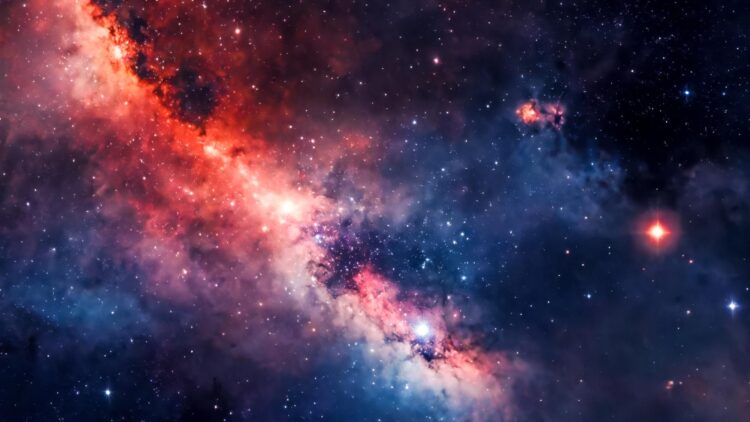Space is very vast and knowing what is beyond the boundaries of what we can see is hard, especially because we are constantly moving and our technology, as good as it is and as much as it has developed, still has many limitations. But scientist have now just seen a giant cloud of molecular hydrogen, shaped like a crescent, sitting just 300 light-years away at the edge of the Local Bubble, a region of space around us. They have named this cloud Eos, after the Greek goddess of dawn due to the fact that it glows in far-ultraviolet light.
Astrophysicist Blakesley Burkhart of Rutgers University eplains the significance of this discovery “This is the first-ever molecular cloud discovered by looking for far-ultraviolet emission of molecular hydrogen directly. The data showed glowing hydrogen molecules detected via fluorescence in the far-ultraviolet. This cloud is literally glowing in the dark.”
The Eos molecular cloud, one of the most impressive discoveries
If you are just stargazing from Earth (even with a telescope) it can be easy to assume that the space between stars is totally empty, but that is not true. There is a lot of sparse material drifting between them and filling up the gaps, except that it is mostly gas and dust which makes it hard to detect unless it gathers into denser clouds like nebulae. But even then it can be invisible to the eye, as nebulae do not emit much light, and what little glow it gives off usually gets drowned out by the much brighter stars nearby.
To track these clouds, astronomers search for carbon monoxide, which allows them to find most of them, but some clouds do not have enough carbon monoxide to show up, which prompted scientists to look for an alternative way to track them. The idea was simple, using ultraviolet light, which luckily, the space telescope from South Korea’s STSat-1 is able to capture.
Since hydrogen makes up the vast majority of visible matter in the Universe, and it glows faintly in the far-ultraviolet when hit with UV light from nearby stars, focusing on the glow would help them find the clouds. And it provided just enough data to find Eos and allow them to map it out. Eos spans about 80 to 85 light-years and holds roughly 2,000 times the mass of our Sun in molecular hydrogen. If our eyes could actually see in the far-ultraviolet, Eos would take up a patch of sky 40 times wider than the full Moon.
The thing with these clouds is that they tend towards disintegration, as the hydrogen is slowly broken apart by surrounding starlight in a process called photodissociation. In about 5.7 million years, the whole cloud will be gone, which should give scientists enough time to research it.
Burkhart continues “When we look through our telescopes, we catch whole solar systems in the act of forming, but we don’t know in detail how that happens. Our discovery of Eos is exciting because we can now directly measure how molecular clouds are forming and dissociating, and how a galaxy begins to transform interstellar gas and dust into stars and planets.”
This discovery is key because it is not just about the Eos cloud, it has opened up a whole new way of hunting for molecular hydrogen throughout the Milky Way, and since this method does not rely on detecting carbon monoxide, it could reveal many more hidden clouds that have escaped notice until now.
Cosmologist Thavisha Dharmawardena from New York University adds, “The use of the far-ultraviolet fluorescence emission technique could rewrite our understanding of the interstellar medium, uncovering hidden clouds across the galaxy and even out to the furthest detectable limits of cosmic dawn.”

